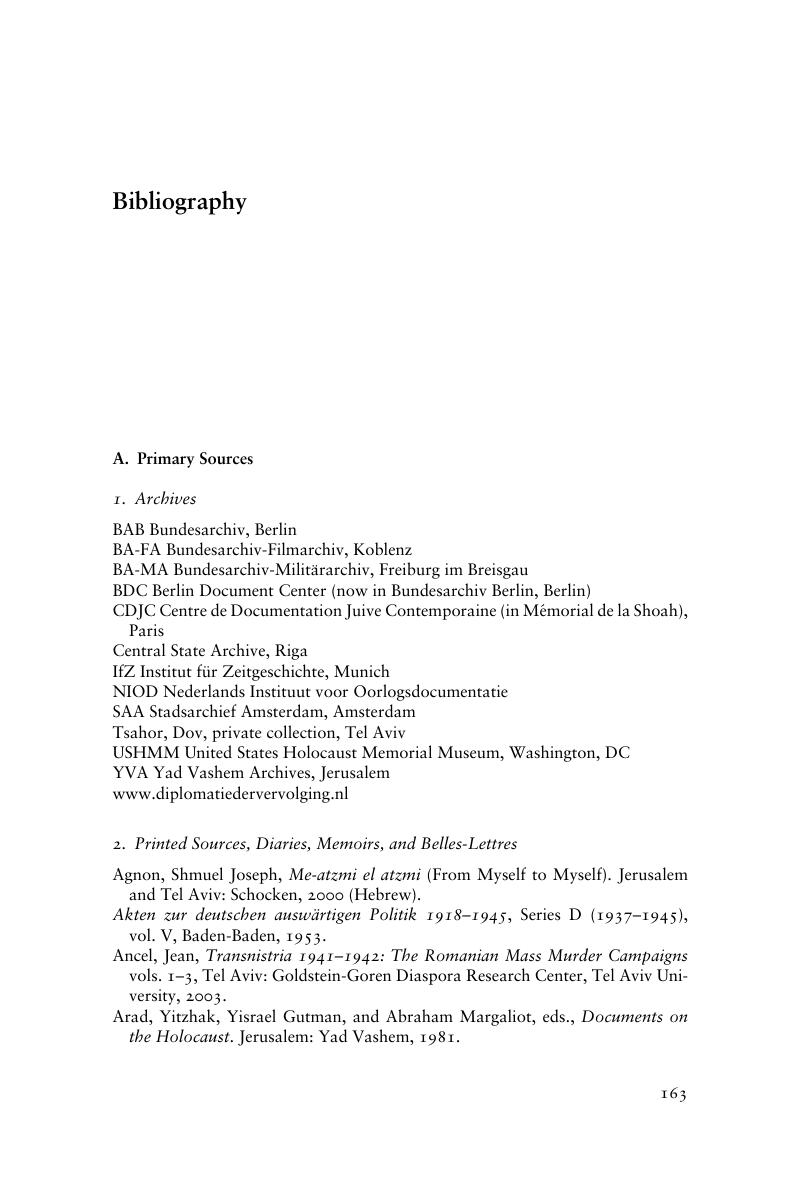Book contents
- Frontmatter
- Contents
- Introduction
- 1 Historiography and Popular Understandings
- 2 Ghetto: The Source of the Term and the Phenomenon in the Early Modern Age
- 3 Ghetto and Ghettoization as Cultural Concepts in the Modern Age
- 4 The Nazis' Anti-Jewish Policy in the 1930s in Germany and the Question of Jewish Residential Districts
- 5 First References to the Term “Ghetto” in the Ideological Discourse of the Makers of Anti-Jewish Policy in the Third Reich (1933–1938)
- 6 The Semantic Turning Point in the Meaning of “Ghetto”: Peter-Heinz Seraphim and Das Judentum im osteuropäischen Raum
- 7 The Invasion of Poland and the Emergence of the “Classic” Ghettos
- 8 Methodological Interlude: The Term “Ghettoization” and Its Use During the Holocaust Itself and in Later Scholarship
- 9 Would the Idea Spread to Other Places? Amsterdam 1941, the Only Attempt to Establish a Ghetto West of Poland
- 10 Ghettos During the Final Solution, 1941–1943: The Territories Occupied in Operation Barbarossa
- 11 Ghettos During the Final Solution Outside the Occupied Soviet Union: Poland, Theresienstadt, Amsterdam, Transnistria, Salonika, and Hungary
- 12 Summary and Conclusions
- Bibliography
- Index
- References
Bibliography
Published online by Cambridge University Press: 01 March 2011
- Frontmatter
- Contents
- Introduction
- 1 Historiography and Popular Understandings
- 2 Ghetto: The Source of the Term and the Phenomenon in the Early Modern Age
- 3 Ghetto and Ghettoization as Cultural Concepts in the Modern Age
- 4 The Nazis' Anti-Jewish Policy in the 1930s in Germany and the Question of Jewish Residential Districts
- 5 First References to the Term “Ghetto” in the Ideological Discourse of the Makers of Anti-Jewish Policy in the Third Reich (1933–1938)
- 6 The Semantic Turning Point in the Meaning of “Ghetto”: Peter-Heinz Seraphim and Das Judentum im osteuropäischen Raum
- 7 The Invasion of Poland and the Emergence of the “Classic” Ghettos
- 8 Methodological Interlude: The Term “Ghettoization” and Its Use During the Holocaust Itself and in Later Scholarship
- 9 Would the Idea Spread to Other Places? Amsterdam 1941, the Only Attempt to Establish a Ghetto West of Poland
- 10 Ghettos During the Final Solution, 1941–1943: The Territories Occupied in Operation Barbarossa
- 11 Ghettos During the Final Solution Outside the Occupied Soviet Union: Poland, Theresienstadt, Amsterdam, Transnistria, Salonika, and Hungary
- 12 Summary and Conclusions
- Bibliography
- Index
- References
Summary

- Type
- Chapter
- Information
- The Emergence of Jewish Ghettos during the Holocaust , pp. 163 - 182Publisher: Cambridge University PressPrint publication year: 2011



